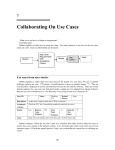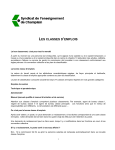Download Best Practices in Troubleshooting
Transcript
Best Practices in Troubleshooting John MacDonald CET / DTM May 23rd, 2012 Ice Breaker Most recent problem solved Share a Hobby Confirm Agenda Time will be limited. We have time for a few specific examples. Lets agree on the most popular issues that give you grief. Troubleshooting Right Imagine Four wire colours example Pay close attention to the process Best person to evaluate information Top Five Mistakes Preconceived notion of problem Failure to review possible options Make problem more complicated Ignore Actual Situation Failure to consider timing How long will it take? Isolate an open Trace a short Trace a ground Locate a reversed horn / Bell Trace an open signal circuit The Process Do something that will give you information. Evaluate the information. Retest for confirmation. Decide on your next step Eliminate the impossible and you are left with the possible. Components Diodes Capacitors Batteries Power Supplies Microprocessors Networking / Communications Types of Trouble Grounds Opens Shorts Intermittent False Alarms Transient suppression Battery Disconnect Tools Review Meter specifications Know what you want to measure RMS Demonstration Ground on a panel Measure a Battery with load Opens Shorts – Signal Circuits Additional Skills Binary Number System Hex Number System Reading Components Diodes / Resistors / Capacitors Wrap up – Additional Questions Answer to Imagine puzzle

















